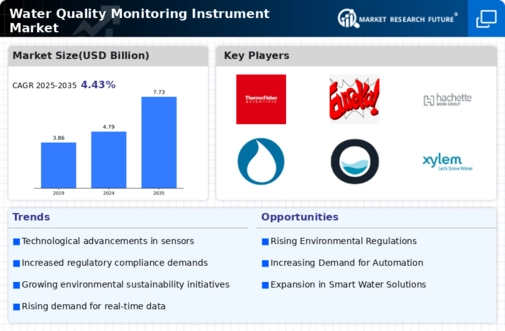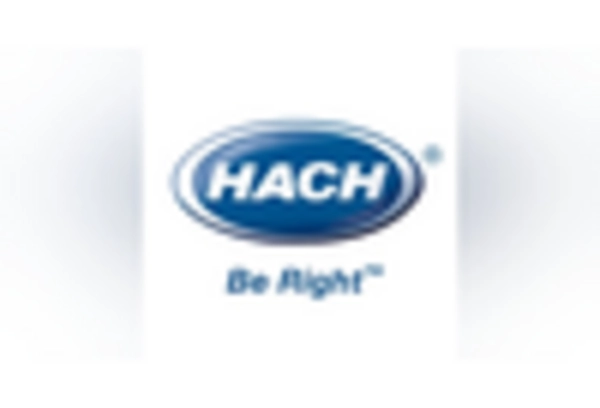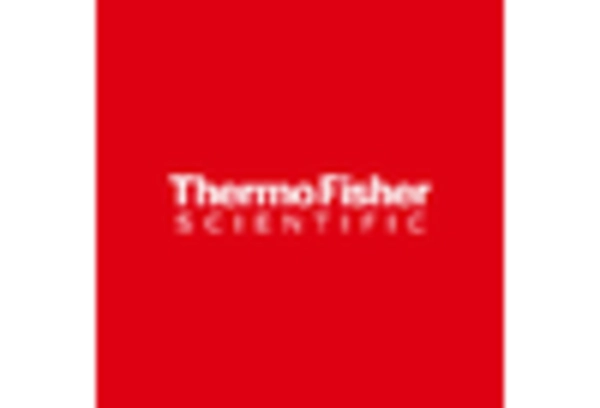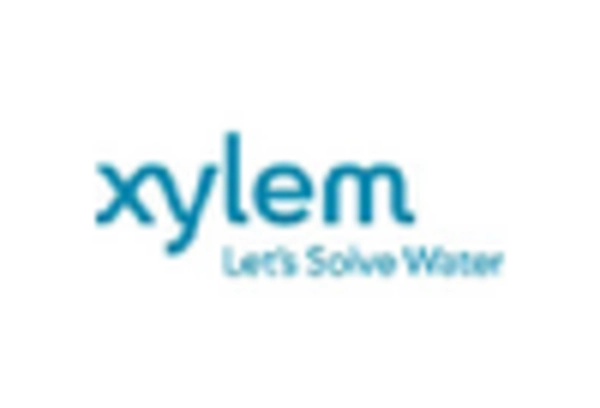Increasing Water Pollution Concerns
The rising levels of water pollution across various regions appear to be a primary driver for the Water Quality Monitoring Instrument Market. Contaminants from industrial discharges, agricultural runoff, and urban waste have led to heightened awareness regarding water safety. As a result, governments and organizations are investing in advanced monitoring technologies to ensure compliance with environmental standards. The market for water quality monitoring instruments is projected to grow significantly, with estimates suggesting a compound annual growth rate of over 7% in the coming years. This growth is likely fueled by the need for real-time data to address pollution issues effectively.
Rising Demand for Sustainable Practices
The growing emphasis on sustainability and environmental stewardship is influencing the Water Quality Monitoring Instrument Market. Organizations are increasingly adopting sustainable practices, which include regular monitoring of water quality to minimize ecological impacts. This trend is particularly evident in industries such as agriculture and manufacturing, where water usage and discharge are closely scrutinized. The market is likely to benefit from this shift, as companies invest in monitoring instruments that align with sustainability goals. Analysts suggest that the market could see a growth trajectory of around 10% as businesses prioritize eco-friendly operations.
Public Awareness and Education Initiatives
Public awareness regarding water quality issues is on the rise, which is positively impacting the Water Quality Monitoring Instrument Market. Educational campaigns aimed at informing communities about the importance of clean water are leading to increased demand for monitoring solutions. As individuals and organizations become more conscious of water quality, there is a corresponding rise in the adoption of monitoring instruments for both personal and commercial use. This trend is expected to drive market growth, with estimates indicating a potential increase in demand by 12% over the next few years as awareness initiatives continue to expand.
Regulatory Frameworks and Compliance Requirements
The establishment of stringent regulatory frameworks regarding water quality is a significant driver for the Water Quality Monitoring Instrument Market. Governments are implementing regulations that mandate regular monitoring of water sources to protect public health and the environment. Compliance with these regulations necessitates the use of advanced monitoring instruments, thereby driving market growth. For instance, the introduction of new standards for drinking water quality has led to increased investments in monitoring technologies. The market is expected to expand as organizations seek to meet these compliance requirements, with a projected growth rate of approximately 8% annually.
Technological Innovations in Monitoring Instruments
Technological advancements in sensor technologies and data analytics are transforming the Water Quality Monitoring Instrument Market. Innovations such as IoT-enabled devices and remote monitoring systems enhance the accuracy and efficiency of water quality assessments. These instruments can provide real-time data, enabling quicker responses to contamination events. The integration of artificial intelligence in data analysis further supports predictive maintenance and proactive measures. As a result, the market is experiencing a surge in demand for sophisticated monitoring solutions, with projections indicating a potential increase in market size by 15% over the next five years.


















Leave a Comment